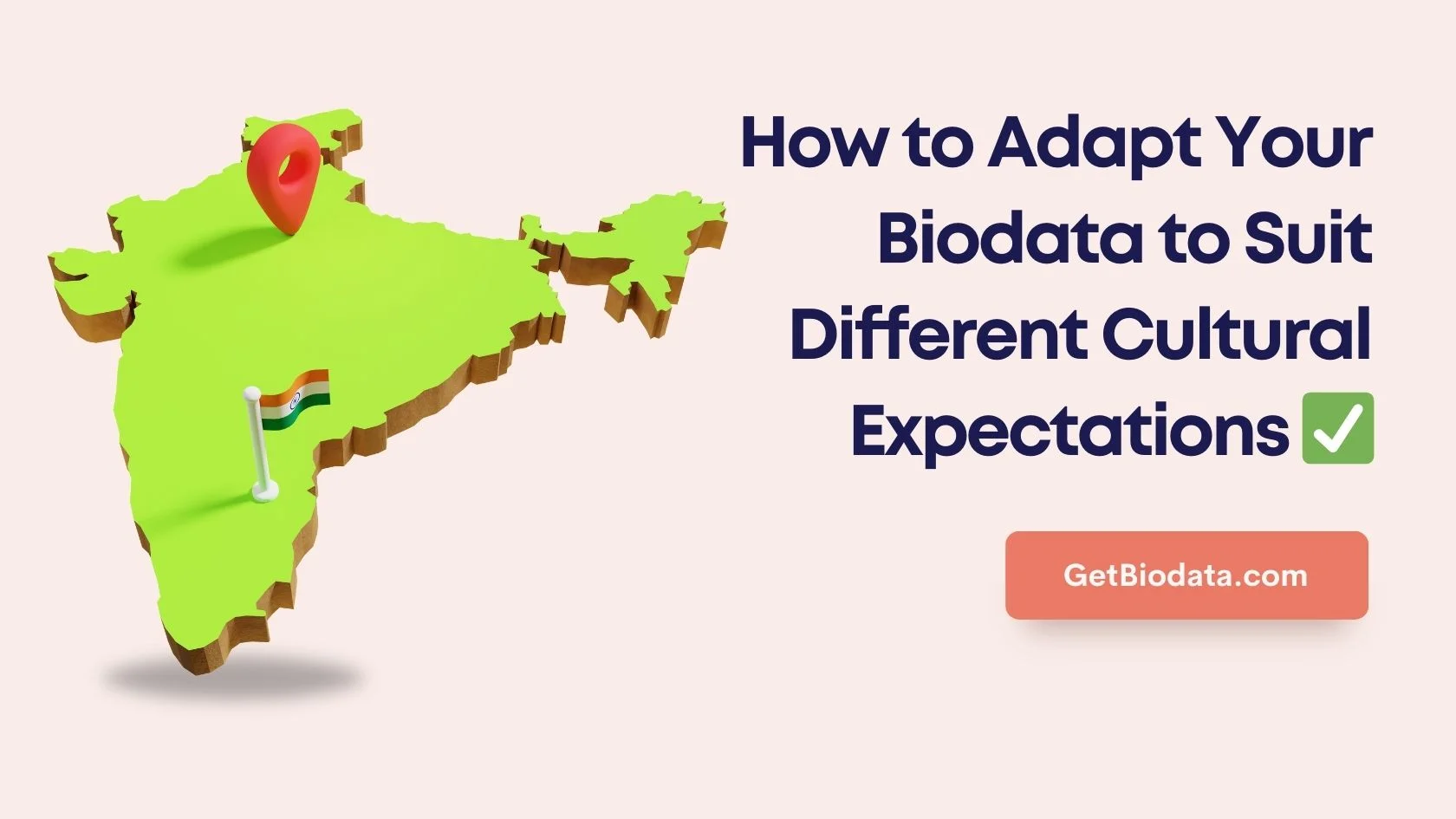When it comes to matrimonial alliances, especially in diverse cultural contexts, the biodata acts as a critical tool, painting a comprehensive picture of who you are.
However, cultural expectations vary widely, making it essential to adapt your biodata according to the culture you’re navigating.
This guide shares tips on customizing your biodata to resonate with different cultural expectations effectively.
Key Takeaways:
- Recognize that biodata varies with cultural context.
- Research and understand the prospective culture beforehand.
- Reflect the cultural preferences and priorities in biodata.
- Highlight aspects like interests, achievements, family background, and social values.
- Seek professional help and feedback to enhance the accuracy and appeal of your biodata.
Understanding Cultural Context
The understanding of cultural context is paramount. Cultures, while distinct, share common aspects: values, beliefs, traditions, life perspectives, and expectations.
If these attributes form a country’s cultural fabric, families provide these attributes with texture and shades of variation.
These same attributes translate into how biodata is perceived and what aspects of it are given importance.
Therefore, knowing your audience’s cultural expectations helps to align your biodata accordingly.
Adapting Your Biodata: A Step-By-Step Guide
Here are guidelines to adapt your biodata effectively:
A) Conduct In-Depth Research
Understanding is the first step towards adapting. Delve into the philosophies, traditions, and values of the culture you’re catering to.
Look into the inclusive biodata elements they prioritize: family values, academic achievements, career progression, lifestyle, etc.
B) Match Your Biodata with Cultural Preferences
Efficiently reflecting this understanding in your biodata is next. It should highlight aspects prioritized by the target culture.
For example, many parents in India value professional stability and family background, whereas Western cultures lean towards personal interests, hobbies, and openness towards embracing differences.
C) Include Interests, Hobbies, and Achievements
Hobbies and interests are universal reflections of personality. They can subtly indicate your flexibility and compatibility with a particular culture.
Achievements, both academic and extracurricular, add another dimension to this. Sharing language proficiency, if applicable, can also be a great addition, especially when dealing with non-English speaking cultures.
D) Elaborate on Family Background
Most cultures place significant emphasis on family backgrounds. Therefore, list out details about your parents’ professions, siblings, and, if needed, extended family.
Also, include a section illustrating your family’s values, ethos, and standing in the community.
E) Highlight Social Values and Beliefs
Understanding and alignment with the social fabric of a culture is important.
If you volunteer for causes that resonate with the culture or have participated in related community activities, include that.
It showcases your alignment and adaptability to the social and ethical aspects of the culture.
F) Invite Professional Help
If needed, consider professional help such as cultural consultants or even friends from the culture.
They could provide insights into the nuances, help you avoid faux pas, and make your biodata more appealing.
G) Seek Feedback
Finally, before sending out the biodata, take feedback. Ideally, someone from the culture who knows you well would be the ideal person to advise you.
Final Thoughts
The biodata is more than just a document; it is a representative of you in your absence.
Adapting it to the cultural expectations of your prospective match will help effectively translate who you are onto paper. Remember to be genuine and respectful.
Recent Blog
-
How to Write a Marriage Biodata: A Complete Guide
-
12 Essential Elements to Include in Your Marriage Biodata
-
Top 10 Fatal Mistakes to Avoid When Creating Your Marriage Biodata
-
10 Best Practices to Format Your Marriage Biodata The Right Way!
-
How to Make Your Marriage Biodata Stand Out?
-
Understanding the Role of Biodata in Indian Marriages
-
How to Tweak Your Biodata to Suit Different Cultural Expectations?
-
How Sarah Made Her Marriage Biodata Attention-Grabbing with Getbiodata
-
A Successful Journey of Creating an Impressive Biodata with Getbiodata
-
Use These 10 Unique Features to Elevate Your Marriage Biodata



Hey, Jack here. I’m hooked on your website’s content – it’s informative, engaging, and always up-to-date. Thanks for setting the bar high!